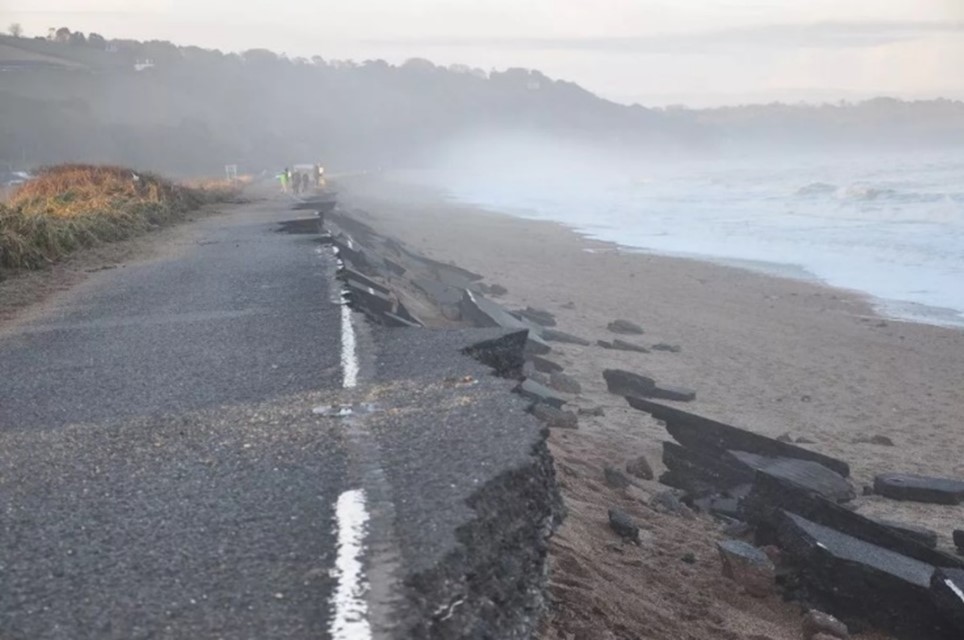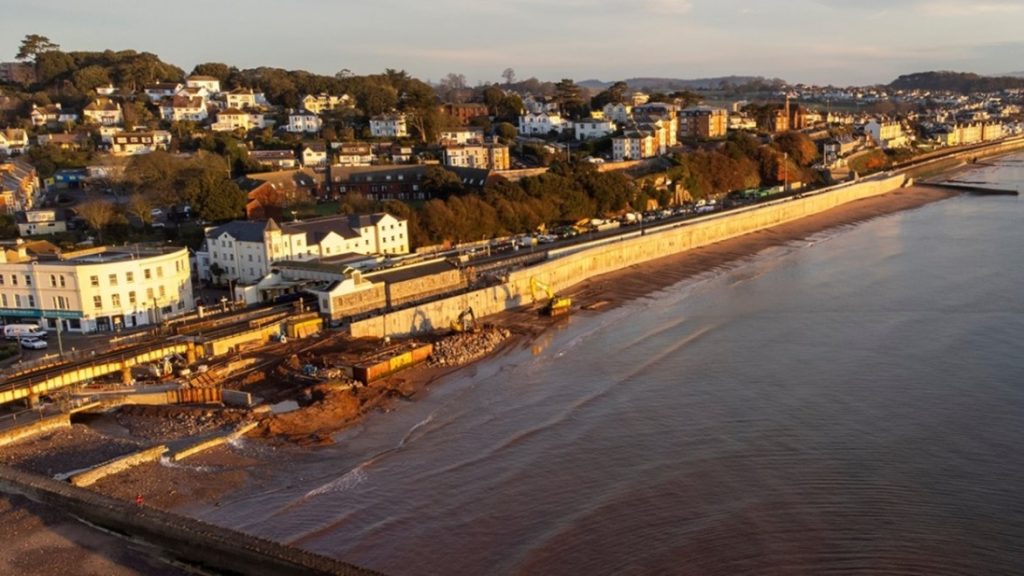The Department for Transport is consulting on climate change adaptation and the approach it wants to see the transport sector follow. Greengauge 21 believes that the DfT’s proposed approach misses an essential need of an adaptation strategy.
While resilience is all about taking steps to mitigate the effects of climate change on the national transport network infrastructure, climate change adaptation requires consideration of more fundamental questions:
- what parts of today’s network should be retained?
- do suitable alternative infrastructures exist?
- and if not, what would the best approach be to create them?
Specifically, this means consideration should be given on a case-by-case basis to adjacent infrastructure networks. There is no sign of this requirement in the DfT’s consultation paper.
Our response to the consultation submitted to the DfT’s Adaptation Strategy Team centres on this point and its practical implications.
The Department for Transport’s approach and the Climate Change Committee’s standpoint
The guidance, actions and tools suggested in the DfT consultation paper centre on an assumption that there will need to be improvements in understanding the climate change adaptation components of existing policies and projects under appraisal.
This approach clearly is inconsistent with the views of the Climate Change Committee (CCC). In January 2023, it published a report titled ‘Investment for a well-adapted UK’ which says that:
“Network Rail is now developing estimates of additional investment needed for a climate resilient rail network. Long-term adaptation pathways and investment strategies are expected to be developed for all regions in Great Britain by 2029.”
But what DfT is proposing – a better understanding of the adaptation component in existing policies and projects – would seem to preclude such an approach.
What the CCC is seeking – and indeed what Network Rail is already expected to deliver – are strategies that may entail additional investment in pathways and strategies specifically designed to make adaptations, i.e. changes, to the existing network.
Such measures might entail, for example, a completely new rail alignment, or even a highway-based solution. Either might offer better value when facing significant costs for resilience measures on the existing rail infrastructure arising from climate change effects.
The CCC expectations (ref 1) on climate change adaptation measures cover three important points:
- The costs of adaptation this decade could be £10 billion/year or even more if this includes pro-active adaptation;
- Currently there is no agreed and well-defined vision for what a well-adapted UK looks like and there are no associated targets or goals for desired resilience standards at a national, local or sectoral level;
- Public investment to deliver weather and climate resilience will also need to recognise the increasing interconnectedness of infrastructure systems. It may sometimes be the case that the most cost-effective way to protect against future climate hazards may be through investment in other adjacent infrastructure networks.
The need to look at adjacent infrastructure
There is a risk that the Department’s planned new guidance on Climate Change adaptation will be applied line by line, or one section of highway at a time without due regard to existing or potential adjacent infrastructure networks.
Indeed the proposed new DfT adaptation response doesn’t even mention consideration of adjacent infrastructure networks, leave alone make it a requirement.
Adaptation and resilience are different, although a CCC report acknowledges there is an overlap. (ref 2) While climate change adaptation is ‘the process of adjustment to actual or expected climate and its effects’, resilience is ‘the capacity… to cope with a hazardous event, trend or disturbance, responding or reorganising in ways that maintain their essential function….’.
The distinctions are important. Clearly both courses of action will be needed to respond to climate change. Recognising the increasing inter-connection of mitigation and adaptation, in its January 2023 report, CCC says it has:
‘set ourselves a further challenge from 2023 onwards: to integrate our analysis of our twin responsibilities, reducing emissions and adapting to climate change.’
One area, two case studies
Climate change has many adverse impacts but one of them is to damage coastal defences. Two examples of places in South Devon where climate change has prompted consideration of both resilience and adaptation measures are shown below.
They are both east-facing coasts, and so spared the effects of the predominant South Westerly air flows and storms, but are each at risk in Easterly storms, especially if they coincide with high tides.
One is a highway, one a railway, and both have been subject to resilience works. In one case these are believed not to offer a long term solution; in the other, the resilience works programme itself is proving to be so long term in its delivery that it cannot be considered a satisfactory resolution on its own.
1. A379 at Slapton
This road in South Devon lies atop a shingle bank, washed away (again) in 2018. It supports a long established bus route 93 that links Dartmouth and Kingsbridge and a string of intermediate villages.
South Hams District Council in 2019 appointed an adaptation manager who will “work closely with the community” to “ease traffic issues and create positive changes to prepare for the future loss of the [road]”. Losing the A379 along this coastal section is an example of an adaptation measure. It would call for consideration of measures on adjacent infrastructure. Repairing the storm damage as illustrated below entailed a short term resilience measure.
A379 ‘Slapton Line’

Image: Ian Coomber, courtesy Devon Live
The A379, now rebuilt, is not expected to be resilient to further climate change-based adverse weather impacts, but there has so far been a reluctance to invest in the adaptive measures that would be needed to maintain suitable access to places such as Strete and Torcross that lie along the A379. Adaptation would likely entail widening some of today’s patchwork of narrow lanes to provide an appropriate inland alternative route.
Adaptation measures such as these often require facing up to tough choices. They typically require investment rather than maintenance & repair spend.
2. Great Western Main Line, Exeter-Newton Abbot
This is the only national rail connection for Torbay, Plymouth and the county of Cornwall. Here, bringing resilience and adaptation measures together into a new overall strategy may offer the best way forward and the best business case.
The line was knocked out of use at Dawlish for 2 months by storm damage in 2014 and Network Rail has been progressing a resilience recovery programme ever since. Works at Dawlish have now been completed. But further resilience work is needed along the section of route towards Teignmouth as well as along both the Exe and Teign estuaries.
The 2014 event is a particularly interesting case, because an adaptation response involving consideration of adjacent infrastructure networks was considered, but only as an alternative to a long term resilience programme. There was no consideration of the benefits of an integrated approach to adaptation and resilience.
Dawlish sea wall now fully repaired, ten years later

Image courtesy Network Rail
Breaches such as the 2014 storm event at Dawlish remain unpredictable, but become more likely year by year, as sea levels rise (and major storms become more common). (ref 3)
This example usefully illustrates the inadequacy of the DfT’s proposed approach to climate change adaptation as set out in its consultation document, where no consideration is given to the potential value of adjacent infrastructure. The opportunity to programme resilience works more cost-effectively with an earlier completion date (say 2040s, rather than the 2070s) because services can continue on a parallel route remain out of consideration.
This case is an example where resilience and adaptation measures should be considered together, or, as the Climate Change Committee puts it, ‘[the] most cost-effective way to protect against future climate hazards may be through investment in other adjacent infrastructure networks.’ In other words, through adaptation (recreating a second parallel route) and resilience measures, working in tandem.
At stake are two significant economic benefits currently being foregone:
- significant savings in the cost of Network Rail resilience works along the coastal route in south Devon, with the use of longer track possessions for engineering works made feasible by having an alternative route available and
- continuity of national rail connections for south Devon and Cornwall, by joining together two existing branch lines to create an ‘adjacent’ inland railway suitable for freight and passenger services, and so protecting the regional economy.
In conclusion
We note that Network Rail is regarded in the DfT consultation report as well-advanced on climate change adaptation thinking:
“Network Rail produces regional Weather Resilience and Climate Change Adaptation (WRCCA) strategies to inform how it maintains, updates and improves rail infrastructure. The rail sector is comparatively advanced in adaptation planning. Analysis by the CCC found that the rail sector was one of only five sectors across the economy to have credible policies and plans to adapt to a changing climate.”
But we suggest that DfT needs the national transport infrastructure organisations to go further and require, for example, that Network Rail’s WRCCAs designate on a case-by-case basis adjacent infrastructure that could from part of a new combined adaptation and resilience strategy.
The railway network between Exeter and Plymouth could serve as suitable case study for this type of integrated approach.
Ref 2: Intergovernmental Panel on Climate Change Sixth Assessment Report, 2022.
Ref 3: 10 Journal of Transport Geography Volume 51, February 2016, Pages 97-109 Sea-level rise impacts on transport infrastructure: The notorious case of the coastal railway line at Dawlish, England, David Dawson, Jon Shaw, W. Roland Gehrels.
We actively encourage people to use our work, and simply request that the use of any of our material is credited to Greengauge 21 in the following way: Greengauge 21, Title, Date.
